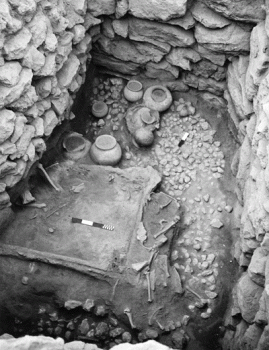American Journal of Archaeology | The Journal of the Archaeological Institute of America
You are here
A Third-Millennium B.C. Elite Mortuary Complex at Umm el-Marra, Syria: 2002 and 2004 Excavations
October 2006 (110.4)
A Third-Millennium B.C. Elite Mortuary Complex at Umm el-Marra, Syria: 2002 and 2004 Excavations
Excavations at Tell Umm el-Marra, Syria, in 2002 and 2004 revealed that the elite Tomb 1 discovered on the site acropolis in 2000 was part of a mid to late third-millennium B.C. mortuary complex devoted to individuals of high rank. The complex included a sequence of at least six tombs as well as installations with evidence of the ritual sacrifice of equids and perhaps human infants. Mortuary data allow for the consideration of the role of social status, gender, ideology, and other variables in the development of local complex society. It is hypothesized that elite ancestor veneration served to reinforce and legitimize local authority, and tomb disturbances are interpreted as desecrations intended to sever the connection between the interred ancestors and the living community. Following the period of the mortuary complex, a large, circular stone platform designated Monument 1 was constructed above it, indicating the continued special character of the Umm el-Marra acropolis in the early second millennium B.C. and the uses of social memory by the authorities of that period.
A Third-Millennium B.C. Elite Mortuary Complex at Umm el-Marra, Syria: 2002 and 2004 Excavations
By Glenn M. Schwartz, Hans H. Curvers, Sally S. Dunham, Barbara Stuart, and Jill A. Weber
American Journal of Archaeology Vol. 110, No. 4 (October 2006), pp. 603–641
DOI: 10.3764/aja.110.4.603
© 2006 Archaeological Institute of America


